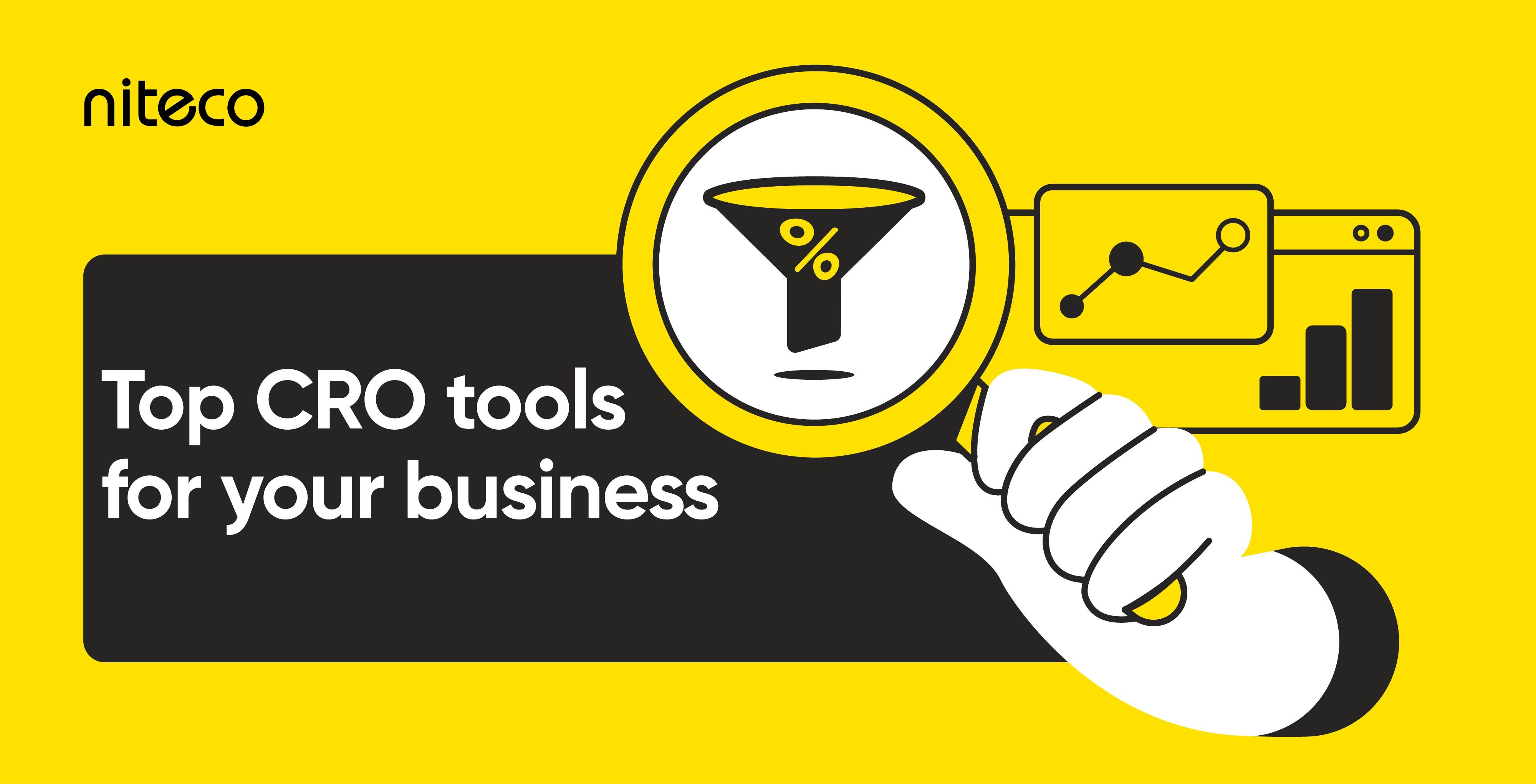Is your website attracting plenty of visitors, but failing to turn them into customers? Or perhaps you're converting a high percentage of your traffic, but the overall volume is simply too low to drive significant growth? Many businesses grapple with this challenge, often because their digital marketing efforts operate in silos, treating search engine optimization (SEO) and conversion rate optimization (CRO) as separate endeavors.
However, to truly maximize your return on investment (ROI) in the digital realm, integrating SEO and CRO is not just beneficial, it’s absolutely essential. By combining these powerful strategies, you can attract more qualified traffic and convert a higher percentage of those visitors into loyal customers, directly leading to increased revenue and a superior ROI.
In this article, we’ll walk through SEO and CRO integration strategies that help you attract the right visitors, keep them engaged, and turn more of them into customers. You’ll see practical tips, real examples, and how brands like Electrolux used this approach to grow traffic and boost ROI.
Let’s dig into how to make your website not only visible but also truly effective.
Why SEO and CRO integration matters
Attracting visitors is just the beginning, turning them into customers is where the real value lies. That’s why SEO and CRO need to work together.
How SEO and CRO are related
You can’t talk about boosting digital performance without including both SEO and CRO.
SEO is the trusted old workhorse - still essential, still evolving. It brings potential customers to your site by optimizing search engines. Think of it as the top of the funnel, where attention and visibility begin.
CRO picks up where SEO leaves off at the bottom of the funnel, turning that traffic into action. It focuses on user experience, calls to action, and removing friction from the customer's journey.
In short: SEO brings them in, and CRO moves them forward. Without one, the other loses impact.
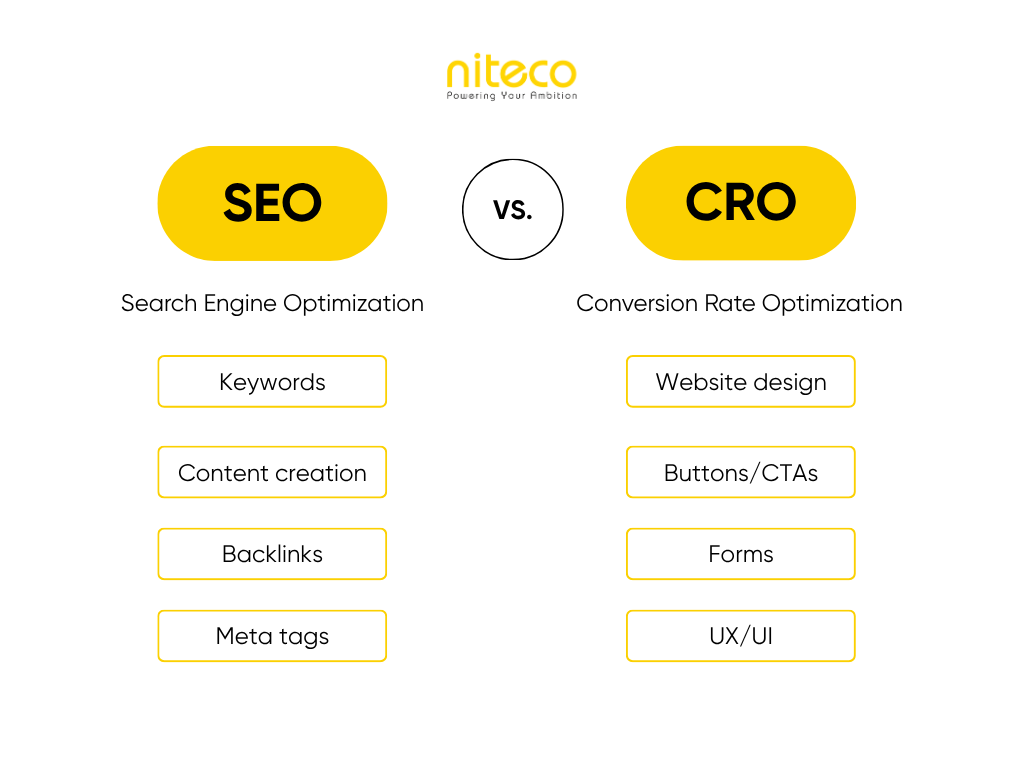
The difference between SEO and CRO
Benefits of combining SEO and CRO to drive engagement and growth
Combining SEO and CRO to drive engagement and growth isn't about choosing one over the other; it’s about recognizing them as complementary strategies. Imagine a beautifully designed shop in a bustling mall (great CRO) but with no clear signage or advertising (poor SEO) - customers simply won't find it. Conversely, a prominent billboard (great SEO) leading to a cluttered, confusing shop (poor CRO) will only frustrate potential customers.
The limitations of focusing on one without the other are clear: high traffic with no conversions is wasted potential, and a high conversion rate on minimal traffic yields negligible results. By integrating SEO and CRO, businesses can create a powerful online presence that attracts the right audience, converts them into customers, and ultimately drives sustainable growth and a higher ROI.
Core strategies to align SEO & CRO
So, how do you bridge the gap between these two crucial disciplines? The key lies in strategic alignment and continuous collaboration.
1. Align goals between SEO and CRO
To get the best results, your SEO and CRO teams need to work toward the same goals, not just focus on traffic or conversions separately.
- Start by setting shared KPIs. Instead of only tracking keyword rankings or form submissions, focus on metrics like how much organic traffic is converting.
- Make sure both teams understand user intent. SEO brings in the right visitors, and CRO helps guide them to take action, so they need to be on the same page from the start.
- Encourage collaboration early on. When planning keywords, loop in the CRO team to ensure landing pages meet user expectations. And when testing page changes, get input from SEO to avoid harming rankings.
- Regular check-ins between teams can help track performance together, adjust strategies, and keep everyone aligned on the ultimate goal: turning search traffic into real results.
2. Integrate keyword research and user intent
One of the most impactful ways to align SEO and CRO is through keyword strategy, but not just for visibility. To truly convert, keyword research needs to be tied directly to user intent. This means looking beyond search volume and focusing on what users actually want when they type in a query.
From the SEO side, the priority is identifying high-intent keywords - search terms that signal a user is ready to take action. These often include specific needs or qualifiers like “best,” “for,” “near me,” or product attributes. For instance, “best running shoes for women with flat feet” isn’t just a product query; it’s a strong buying signal.
Once these keywords are identified, the CRO team steps in to ensure that landing pages match user expectations. Every page should feel like a natural next step from the search: clear, relevant, and focused on solving the user's problem. This includes:
- Matching page headlines and copy to the keyword phrase
- Offering specific product or service details
- Using strong, relevant visuals
- Ensuring the conversion path is quick and intuitive
Take the example of someone searching “best running shoes for women.” If the landing page simply leads to a generic footwear catalog, the user may bounce. But if it presents curated recommendations, user reviews, sizing guidance, and a clear "Buy Now" button - conversions rise. This is where SEO and CRO integration turns intent into results.
3. Optimize content and CTA for seamless user experience
Creating content that ranks is important, but content that ranks and converts is what drives growth. That’s where combining SEO and CRO to drive engagement becomes essential. When content is created with both visibility and usability in mind, you get the best of both worlds: more qualified traffic and more effective conversions.
From the SEO side, it starts with understanding what people are actually searching for and making sure your content shows up when it matters. That means using relevant keywords in the right places (think: headers, meta descriptions, body copy), but also writing content that’s genuinely useful and easy to follow. Ranking is great, but if the content doesn’t deliver once users land, they’re gone.
CRO picks up where SEO leaves off. It’s all about how users experience that content. Can they scan it easily? Does it guide them toward an action without feeling forced? This is where layout, structure, and CTAs make a huge difference. Whether it's a blog post, a product page, or a landing page, good CRO makes sure the next step is clear and friction-free.
For example, if a blog post is ranking for “how to reduce cart abandonment,” don’t let it end with a vague paragraph. Include direct CTAs like:
- “Download our full Commerce CRO checklist”
- “Schedule a free UX audit”
- “See how we helped [Brand] reduce abandonment by 35%”
A great example of this in practice comes from Niteco’s work with Electrolux, a leading home appliance brand. We first enhanced their site content to perfectly match what users were searching for. Then, we added smart CRO improvements, including clean layouts, interactive product carousels, and optimized CTA positioning. This created a smooth, user-friendly experience that pleased both search engines and actual customers, driving better visibility and stronger conversions.
Request a Tailored SEO + CRO Strategy
4. Enhance website speed and mobile optimization
In a world where attention spans are fleeting and mobile devices dominate, website speed and mobile optimization are non-negotiable for both SEO and CRO. That’s why SEO and CRO integration must prioritize site speed and mobile responsiveness from the ground up.
From an SEO perspective, page load time is a confirmed ranking factor. Google’s Core Web Vitals framework focuses heavily on performance metrics like Largest Contentful Paint (LCP) and First Input Delay (FID), which directly impact visibility in search results. A mobile-optimized site is no longer optional either - with Google’s mobile-first indexing, if your mobile experience is weak, your rankings will suffer. You can check this guide on mobile-first design for tips on building mobile-friendly experiences.
From a CRO standpoint, slow or clunky mobile pages are conversion killers. Users won’t wait. A 2025 Site Builder Report found that 53% of mobile users leave a page that takes longer than three seconds to load, regardless of how compelling your content is. A poor mobile layout, unresponsive buttons, or frustrating navigation can instantly derail your funnel. If load speed is a recurring issue, discover this breakdown of common causes and fixes to optimize performance.
To enhance both SEO and CRO:
- Compress and optimize images without losing quality
- Enable browser caching to speed up repeat visits
- Use responsive design so your site performs smoothly on all devices
- Test load times regularly across desktop and mobile using tools like Niteco Performance Insights
By addressing speed and mobile experience together, you ensure your site not only ranks higher but keeps users engaged, setting up more successful conversions from the moment they land.
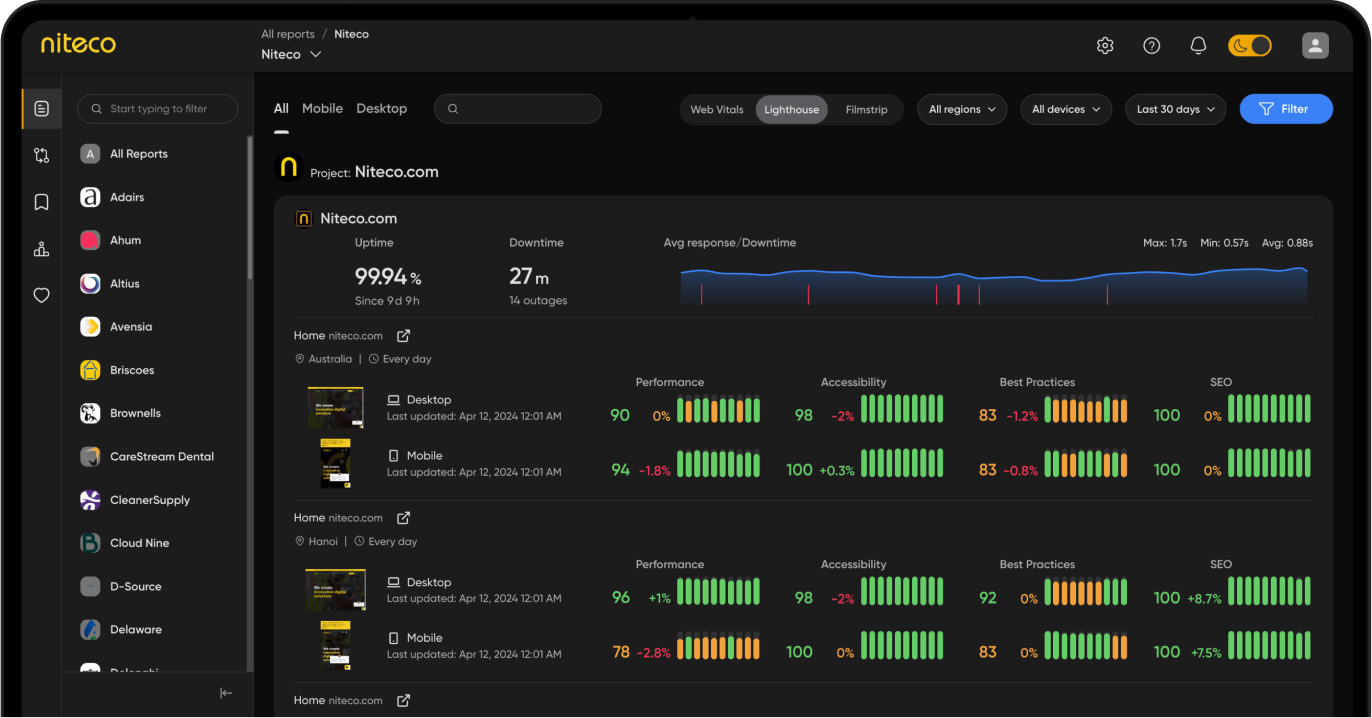
Free speed testing with Niteco Performance Insights tool
5. Analyze user behavior and optimize conversion paths
Understanding how users interact with your website is key to refining both your SEO and CRO strategies. This continuous analysis ensures you’re always improving the user journey. Combining SEO and CRO to drive engagement hinges on deep insights into user behavior.
From the SEO side, the job doesn’t stop at bringing in traffic. You need to monitor engagement metrics like bounce rate, average time on page, and organic click-through rate. These indicators show whether users are landing on the right pages and staying. A high bounce rate or short time on page may suggest that the page isn't meeting intent, even if it ranks well. SEO insights can highlight which entry points are leaking potential further down the funnel.
On the CRO side, it's all about what users do once they land. Are they scrolling? Clicking? Getting confused? Tools like heatmaps, session recordings, and A/B testing platforms help identify exactly where friction exists. Check out this guide to top A/B testing tools to see how to experiment effectively.
For example, if heatmaps show that users aren’t scrolling far enough to see your purchase button, the solution might be as simple as moving the CTA higher on the page or redesigning that section for better visual priority.
SEO vs CRO in action: Leveraging engagement for a leading home appliance brand
Electrolux, a global leader in home appliances, partnered with Niteco to create a high-performing digital strategy that combined visibility with conversion power. By aligning SEO and CRO in a phased, data-driven roadmap, Niteco helped the brand grow traffic, boost engagement, and improve conversion rates across its websites.
The first phase focused on SEO. Electrolux needed to consolidate and strengthen its fragmented search strategy, which had previously been managed by multiple vendors. Niteco took over SEO management starting with six country sites, performing in-depth audits, keyword and competitor research, content optimization, and technical enhancements such as structured data and backlink management.
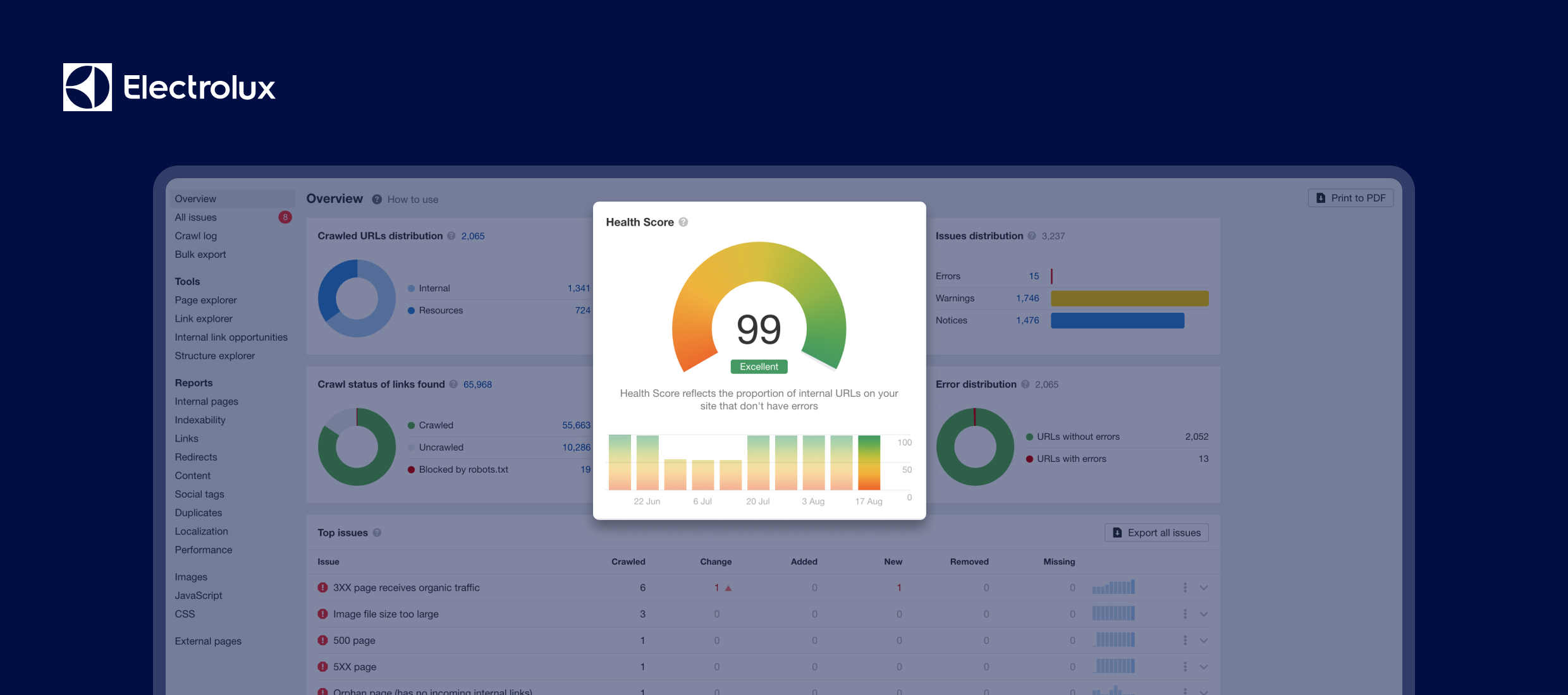
Niteco helped Electrolux maintain an Ahrefs SEO health score above 95
These efforts drove an average 20% increase in organic traffic across the sites, with some reaching up to 40%. Non-branded organic traffic rose by 25%, and new blog content created by Niteco achieved a 2.09% conversion rate, almost double the average. Pleased with the success, Electrolux expanded Niteco’s SEO role to cover 15 sites across the APAC and MEA regions.
Impressed with the impact, they decided to expand their partnership with Niteco and brought us on to handle Conversion Rate Optimization (CRO) as well. Electrolux wanted to turn that traffic into real engagement and long-term growth; and they trusted us to help make it happen.
Using behavioral data from tools like Google Analytics and Hotjar, our CRO team implemented A/B and multivariate tests to improve full-page flows, not just isolated elements. Tests led to a 25% increase in Add to Cart actions, a 21% rise in clicks imgon featured products, and a 9% bump in average session duration. The entire checkout process was also revamped to simplify user decision-making and encourage more selections of installment options.
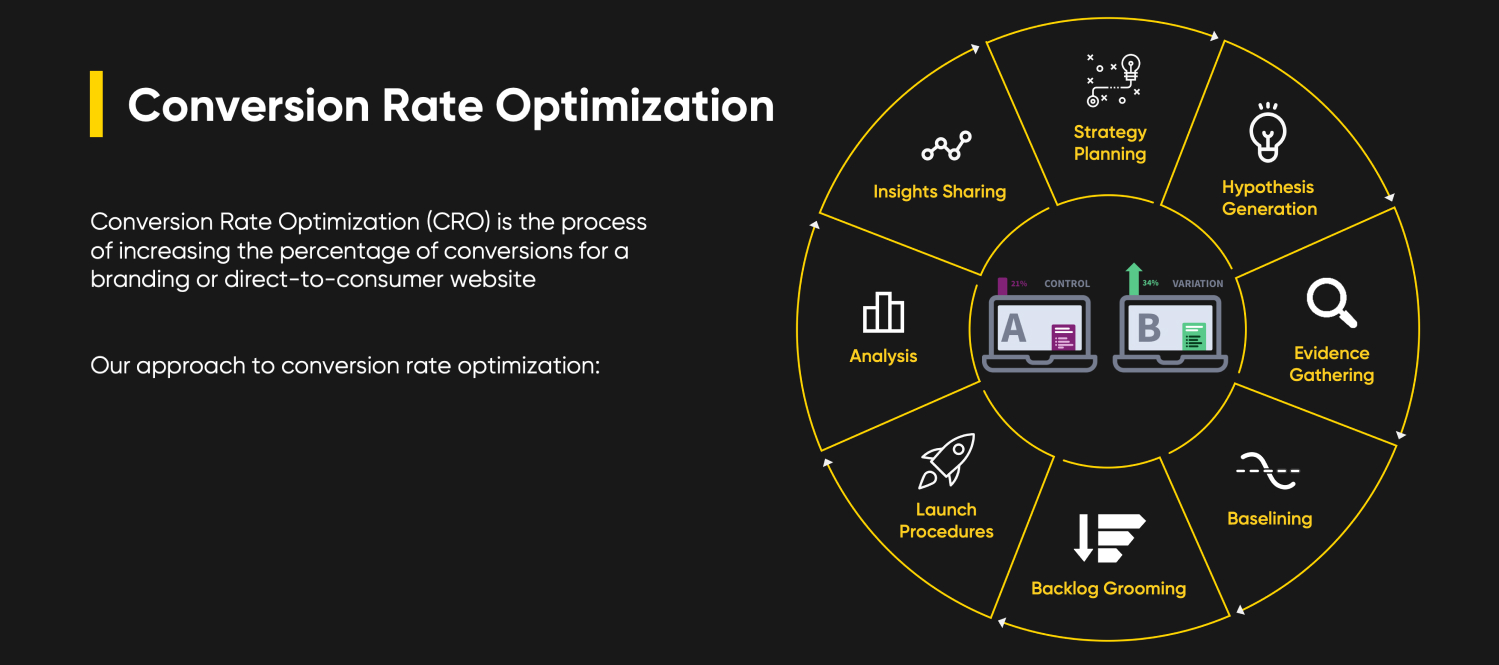
Niteco established an effective conversion rate optimization workflow
This phased approach proves that when SEO and CRO are integrated with purpose, they don’t just drive traffic or improve UX, they unlock sustainable digital growth across every stage of the funnel.
Conclusion: Maximize ROI with SEO and CRO integration with Niteco
When SEO and CRO work together, the impact is clear: more qualified traffic, stronger engagement, and higher ROI. Instead of treating them as separate efforts, integrating the two creates a seamless digital journey - one that brings in the right visitors and guides them effortlessly toward conversion.
Don't let your digital marketing efforts operate in silos. Combining SEO and CRO to drive engagement and maximize your ROI is a strategic imperative. Contact Niteco to build a full-funnel strategy that connects visibility with conversion, and turns your website into a real growth engine.
FAQs
When SEO and CRO are aligned, you not only attract the right visitors but also guide them efficiently through the conversion funnel - boosting ROI.
Google Analytics, Hotjar, SEMrush, Ahrefs, and A/B testing platforms like Optimizely Experimentation are valuable for combining insights from both disciplines.
Absolutely. Niteco works with businesses of all sizes to build smart, scalable strategies, helping smaller teams get more value from every visitor and turn limited budgets into meaningful growth.

